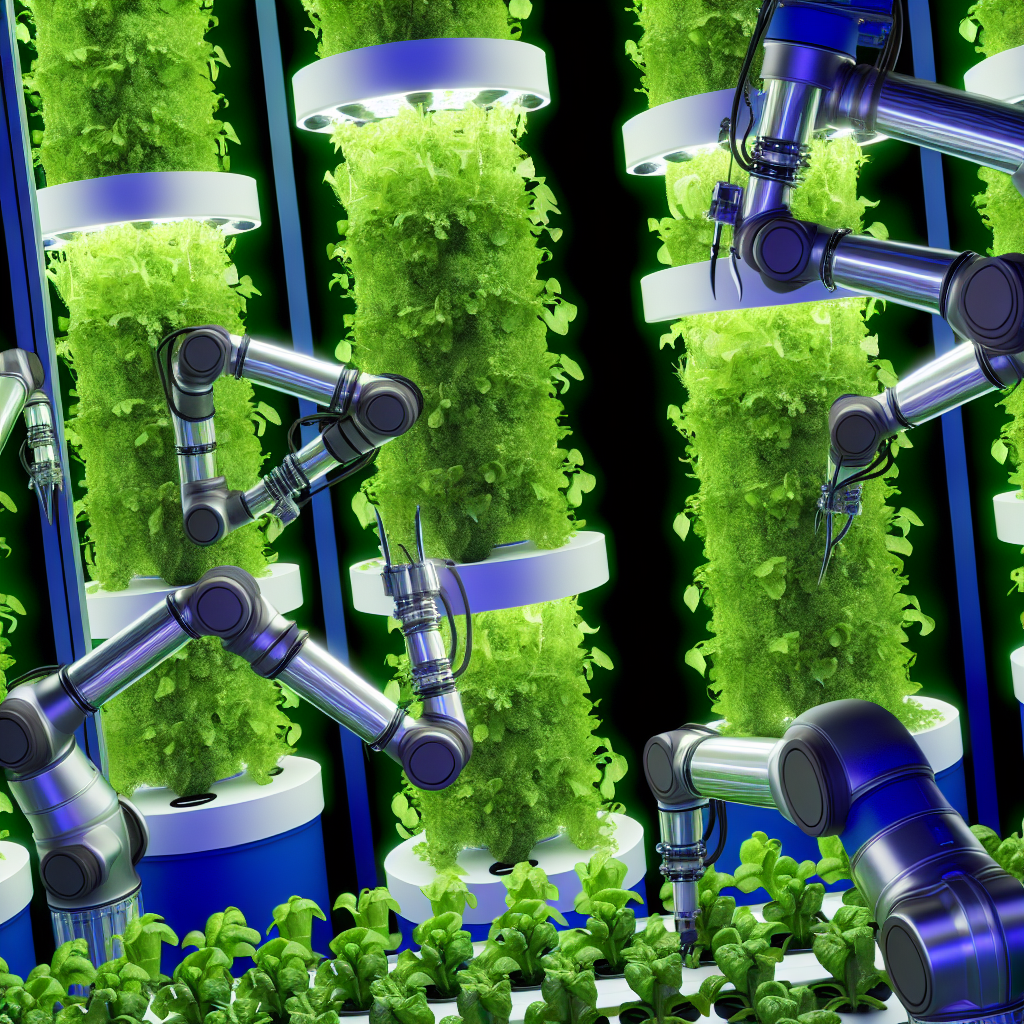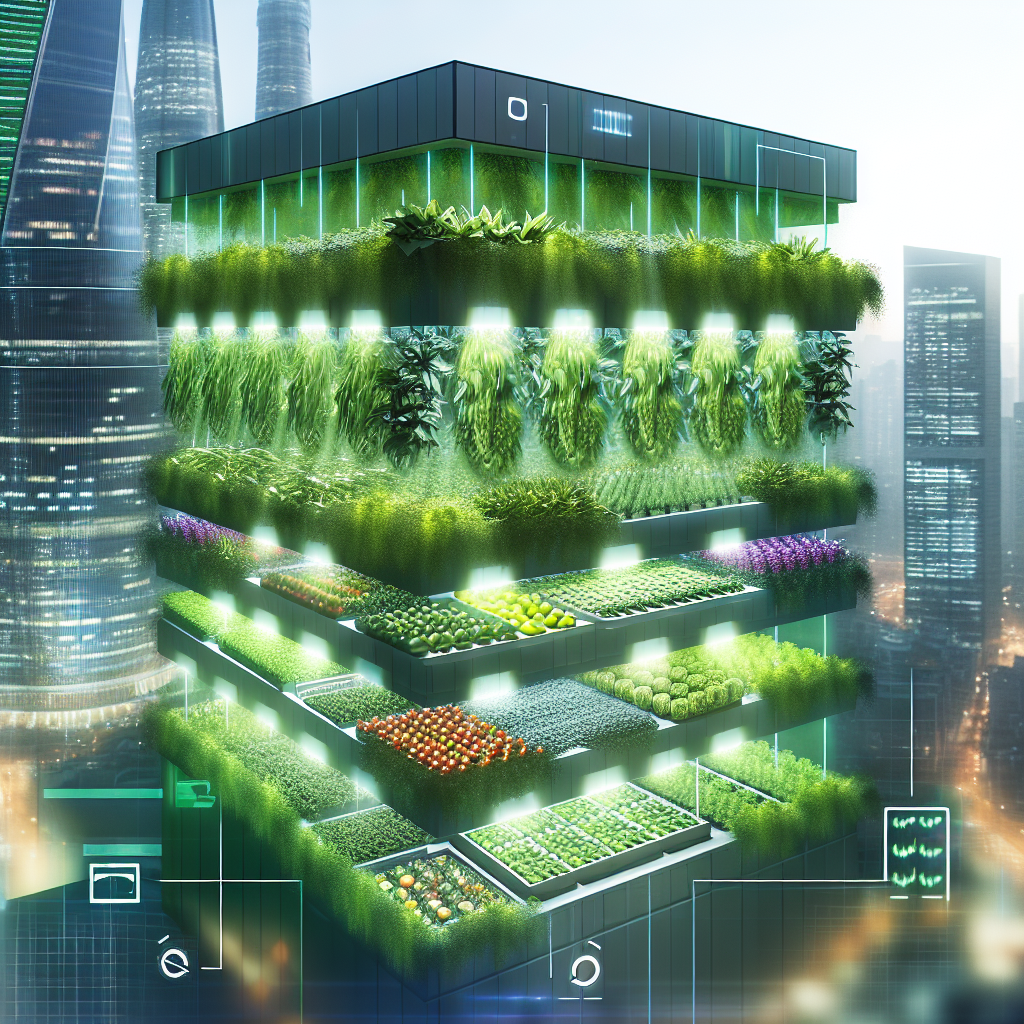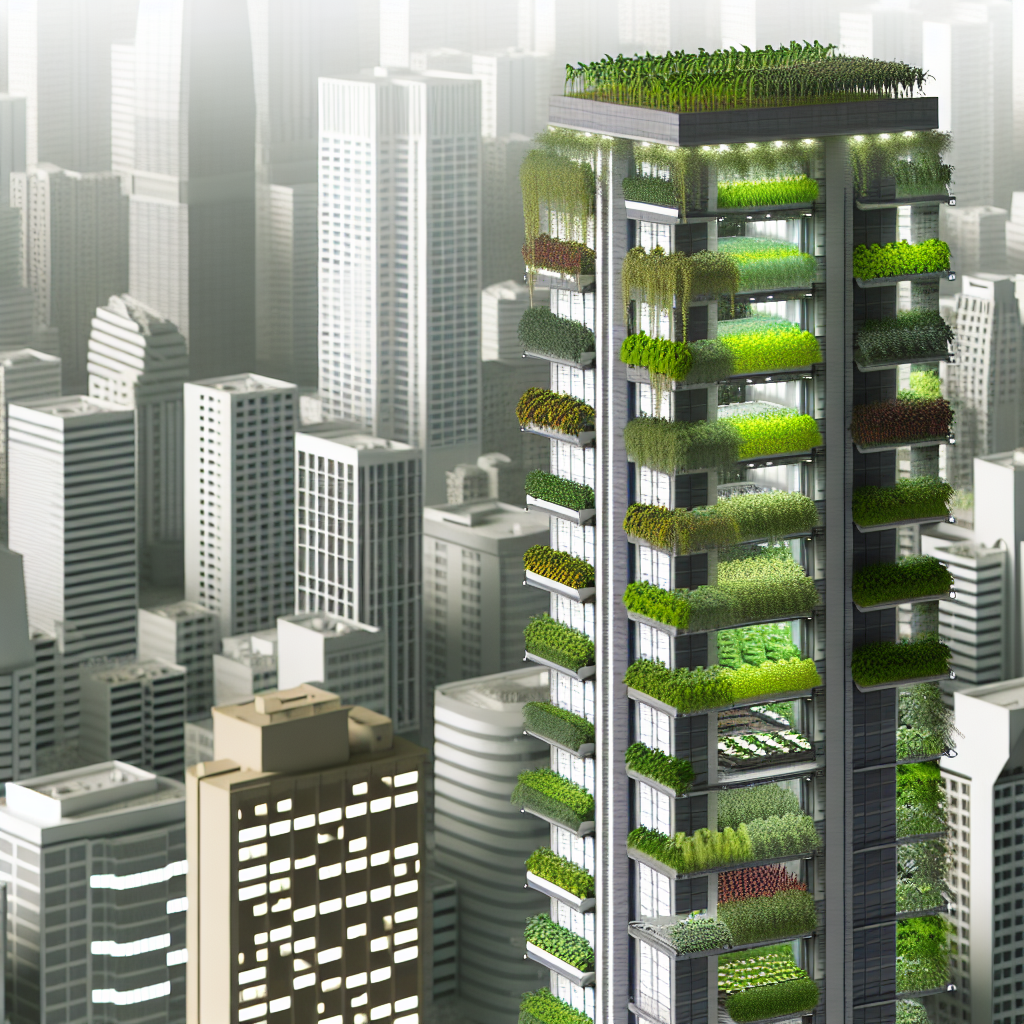Vertical farming revolutionizes urban gardening by maximizing space efficiency with automation, offering a sustainable solution for growing fresh produce in cities. This technology-driven approach transforms urban agriculture by increasing yields in a small footprint and reducing environmental impact.
As cities become more crowded and space becomes limited, the need for innovative solutions to urban gardening has never been more pressing. Vertical farming is one such solution that is revolutionizing the way we grow food in urban environments. By leveraging technology and automation, vertical farming maximizes space efficiency and promotes sustainable farming practices. In this article, we will explore how vertical farming is changing the game for urban gardening, the role of automation in sustainable practices, and how technology is being harnessed for a greener future. Join us as we delve into the world of vertical farming and its potential to transform urban agriculture.
- 1. "Revolutionizing Urban Gardening: The Rise of Vertical Farming"
- 2. "Maximizing Space Efficiency: How Vertical Farming is Changing the Game"
- 3. "The Role of Automation in Sustainable Vertical Farming Practices"
- 4. "Urban Gardening Solutions: Harnessing Technology for a Greener Future"
1. "Revolutionizing Urban Gardening: The Rise of Vertical Farming"

Vertical farming is revolutionizing urban gardening by offering innovative solutions to the challenges of limited space and resources in urban environments. With the use of technology and automation, vertical farming maximizes space efficiency and allows for sustainable farming practices in urban areas.
One of the key advantages of vertical farming is its ability to produce high yields in a small footprint. By stacking crops vertically in multiple layers, vertical farms can grow a large quantity of produce in a fraction of the space required by traditional farming methods. This space efficiency is crucial in densely populated urban areas where land is scarce and expensive.
Furthermore, vertical farming utilizes automation to streamline the growing process and optimize resource usage. Automated systems can control lighting, temperature, humidity, and nutrient levels to create the ideal growing conditions for plants. This not only increases efficiency but also reduces the need for manual labor, making vertical farming a cost-effective and sustainable solution for urban gardening.
Overall, the rise of vertical farming is transforming urban gardening by providing a scalable and efficient way to grow fresh produce in urban environments. With its focus on space efficiency, automation, and sustainable farming practices, vertical farming is poised to play a significant role in addressing the challenges of feeding growing urban populations while minimizing environmental impact.
2. "Maximizing Space Efficiency: How Vertical Farming is Changing the Game"

Vertical farming is revolutionizing the way we think about urban gardening by maximizing space efficiency. Traditional farming methods require large plots of land, but vertical farming allows for crops to be grown upwards instead of outwards. This means that urban areas with limited space can still have access to fresh produce.
By utilizing vertical space, farmers can grow more crops in a smaller footprint, making it an ideal solution for densely populated cities. This innovative approach to farming also allows for greater control over environmental factors such as light, temperature, and humidity, leading to higher crop yields.
Automation plays a key role in maximizing space efficiency in vertical farming. By using technologies such as hydroponics and aeroponics, crops can be grown without soil and with minimal water usage. Additionally, automated systems can monitor and adjust conditions in real-time, ensuring optimal growing conditions for plants.
Overall, vertical farming is changing the game by providing a sustainable and efficient solution for urban gardening. By leveraging technology and maximizing space efficiency, this innovative farming method is helping to create a more sustainable future for our food production.
3. "The Role of Automation in Sustainable Vertical Farming Practices"

Automation plays a crucial role in sustainable vertical farming practices, especially in urban settings where space efficiency is of utmost importance. By leveraging technology, vertical farms are able to maximize their production capacity while minimizing their environmental impact.
Automated systems, such as robotic arms and sensors, help monitor and control various aspects of the farming process, including temperature, humidity, and lighting. This not only ensures optimal growing conditions for the crops but also reduces the need for manual labor, making vertical farming more efficient and cost-effective.
Additionally, automation allows vertical farms to operate 24/7, maximizing their output and consistently supplying fresh produce to urban populations. This constant production cycle helps reduce food waste and dependency on long-distance transportation, further contributing to the sustainability of vertical farming practices.
Overall, automation plays a crucial role in making vertical farming a viable solution for urban gardening, allowing for more efficient use of space and resources while promoting sustainable farming practices.
4. "Urban Gardening Solutions: Harnessing Technology for a Greener Future"

Urban gardening solutions are becoming increasingly important as cities continue to grow and green spaces become more limited. Vertical farming is a prime example of how technology can be leveraged to address this issue. By utilizing vertical space, vertical farming allows for more crops to be grown in a smaller footprint, maximizing space efficiency in urban environments.
Automation plays a key role in vertical farming, allowing for crops to be grown efficiently and consistently. This technology can help reduce labor costs and increase productivity, making sustainable farming practices more feasible in urban settings. With the ability to control factors such as temperature, humidity, and lighting, vertical farming can produce high-quality crops year-round, regardless of external conditions.
By harnessing technology for urban gardening solutions, we can create a greener future for our cities. Vertical farming not only provides a sustainable way to grow food in urban areas but also helps reduce food miles and carbon emissions associated with transportation. As the world continues to urbanize, it is essential that we embrace innovative solutions like vertical farming to ensure a more sustainable and environmentally friendly future.
In conclusion, vertical farming is revolutionizing urban gardening by maximizing space efficiency and harnessing automation for sustainable farming practices. The integration of technology in vertical farming is not only changing the game for urban gardening solutions, but also paving the way for a greener future. By leveraging the benefits of vertical farming, cities can address food security issues, reduce carbon footprint, and create a more sustainable urban environment. As we continue to see advancements in vertical farming technology, the potential for growing food in urban spaces is limitless. Vertical farming truly represents the future of urban gardening and sustainable farming practices.





